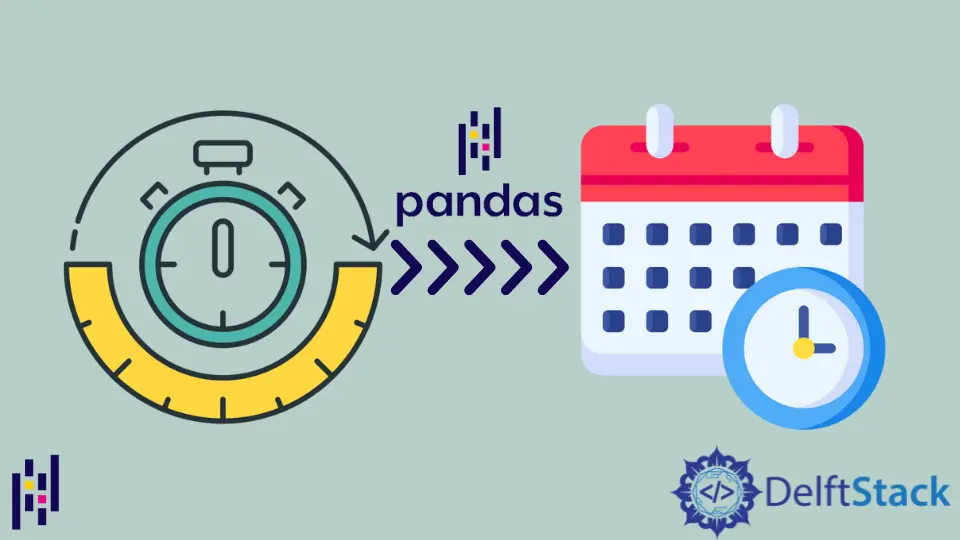How to Convert Timestamp to Datetime in Pandas
- Understanding Timestamps and Datetime
- Method 1: Using pd.to_datetime()
- Method 2: Converting a Series of Timestamps
- Method 3: Handling Different Timestamp Formats
- Method 4: Converting Unix Timestamps with Different Units
- Conclusion
- FAQ

Converting timestamps to datetime in Pandas is a common task that can significantly enhance your data manipulation capabilities. Whether you’re dealing with time series data or simply need to format date entries, understanding how to perform this conversion is essential for any data analyst or scientist.
In this tutorial, we will explore various methods to convert timestamps to datetime using the Pandas library in Python. By the end of this guide, you’ll have a solid grasp of how to handle timestamps effectively, enabling you to streamline your data processing workflows. So, let’s dive into the world of Pandas and unlock the potential of your timestamp data!
Understanding Timestamps and Datetime
Before we get into the conversion methods, it’s essential to understand the difference between timestamps and datetime objects. A timestamp typically represents a specific point in time, often expressed as the number of seconds since the epoch (January 1, 1970). On the other hand, a datetime object in Pandas is a more user-friendly representation of date and time, allowing for easier manipulation and formatting.
Pandas provides various functions to convert timestamps into datetime objects. Let’s explore some of the most effective methods.
Method 1: Using pd.to_datetime()
One of the simplest ways to convert a timestamp to a datetime object in Pandas is by using the pd.to_datetime() function. This function is versatile and can handle various formats, making it a go-to choice for many data analysts.
Here’s how you can use it:
import pandas as pd
timestamp = 1633072800 # Example timestamp
datetime_obj = pd.to_datetime(timestamp, unit='s')
print(datetime_obj)
Output:
2021-10-01 00:00:00
The pd.to_datetime() function takes a timestamp and converts it into a datetime object. In this example, we provided a Unix timestamp (in seconds) as input. The unit='s' parameter specifies that the input is in seconds. This function can handle other units as well, such as milliseconds (‘ms’), microseconds (‘us’), and nanoseconds (’ns’). The result is a datetime object that is much easier to work with for further analysis or visualization.
Method 2: Converting a Series of Timestamps
If you have a Series of timestamps, the pd.to_datetime() function can still be your best friend. It can efficiently convert an entire Series of timestamps into datetime objects in one go.
Here’s an example:
import pandas as pd
timestamps = pd.Series([1633072800, 1633159200, 1633245600]) # Example timestamps
datetime_series = pd.to_datetime(timestamps, unit='s')
print(datetime_series)
Output:
0 2021-10-01
1 2021-10-02
2 2021-10-03
dtype: datetime64[ns]
In this case, we created a Pandas Series containing multiple timestamps. By passing this Series to pd.to_datetime(), we converted all the timestamps into a Series of datetime objects. This method is particularly useful when dealing with large datasets, as it allows for efficient batch processing. The output shows each timestamp converted into a corresponding datetime object, making it easier to analyze trends over time.
Method 3: Handling Different Timestamp Formats
Sometimes, timestamps come in various formats that may not be directly compatible with pd.to_datetime(). Fortunately, this function is robust enough to handle different formats, but you may need to specify the format explicitly in certain cases.
Here’s how you can do it:
import pandas as pd
timestamps = pd.Series(['2021-10-01 00:00:00', '2021-10-02 00:00:00', '2021-10-03 00:00:00']) # Example timestamps
datetime_series = pd.to_datetime(timestamps, format='%Y-%m-%d %H:%M:%S')
print(datetime_series)
Output:
0 2021-10-01
1 2021-10-02
2 2021-10-03
dtype: datetime64[ns]
In this example, we have a Series of timestamps in string format. By using the format parameter, we specify the expected format of the input strings. This is particularly useful when your timestamps are not in the standard format recognized by Pandas. The output confirms that each string has been successfully converted into a datetime object.
Method 4: Converting Unix Timestamps with Different Units
If you are dealing with Unix timestamps that are expressed in different units, you can still use pd.to_datetime() effectively. This method allows you to specify the unit of your timestamp, whether it’s in seconds, milliseconds, or another unit.
Here’s an example to illustrate this:
import pandas as pd
timestamps = pd.Series([1633072800000, 1633159200000, 1633245600000]) # Example timestamps in milliseconds
datetime_series = pd.to_datetime(timestamps, unit='ms')
print(datetime_series)
Output:
0 2021-10-01
1 2021-10-02
2 2021-10-03
dtype: datetime64[ns]
In this case, we have timestamps in milliseconds. By specifying unit='ms', we inform Pandas to interpret the input accordingly. This flexibility makes Pandas a powerful tool for handling various timestamp formats, allowing you to focus more on your analysis rather than worrying about data formatting issues.
Conclusion
Converting timestamps to datetime in Pandas is an essential skill for anyone working with data. Whether dealing with individual timestamps or entire Series, the methods we’ve explored in this tutorial equip you with the knowledge to handle time-related data efficiently. By leveraging functions like pd.to_datetime(), you can streamline your data processing workflows and enhance your analytical capabilities. With practice, you’ll find that managing timestamps becomes a seamless part of your data analysis toolkit.
FAQ
-
What is the difference between a timestamp and a datetime object?
A timestamp represents a specific point in time, often as seconds since the epoch, while a datetime object is a more user-friendly representation of date and time. -
Can I convert multiple timestamps at once in Pandas?
Yes, you can convert a Series of timestamps into datetime objects using thepd.to_datetime()function. -
What should I do if my timestamps are in a non-standard format?
You can specify the expected format using theformatparameter in thepd.to_datetime()function.
-
Are there different units for timestamps in Pandas?
Yes, Pandas supports various units such as seconds (’s’), milliseconds (‘ms’), microseconds (‘us’), and nanoseconds (’ns’). -
How does Pandas handle time zones when converting timestamps?
You can localize datetime objects to specific time zones using thetzparameter in thepd.to_datetime()function.
